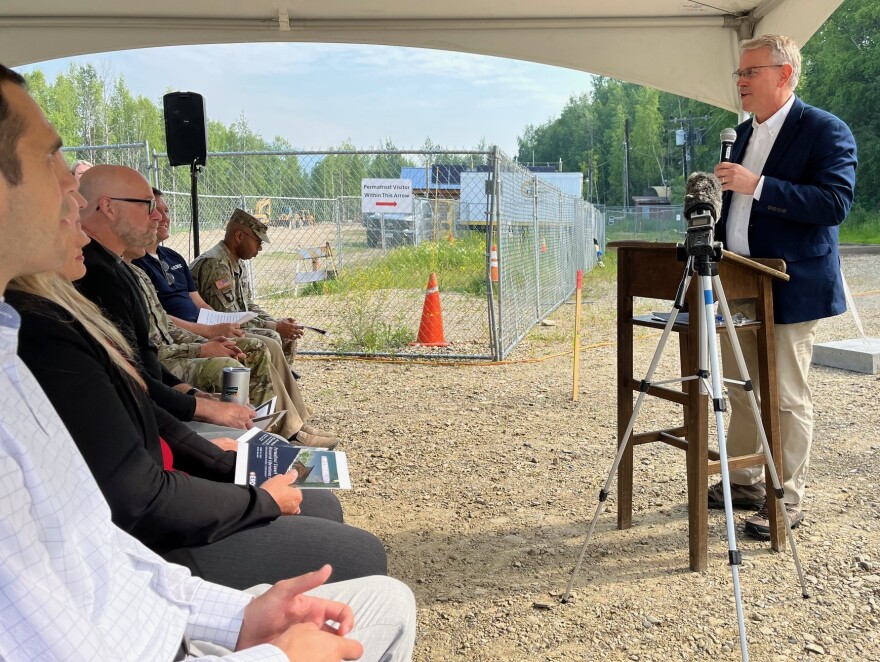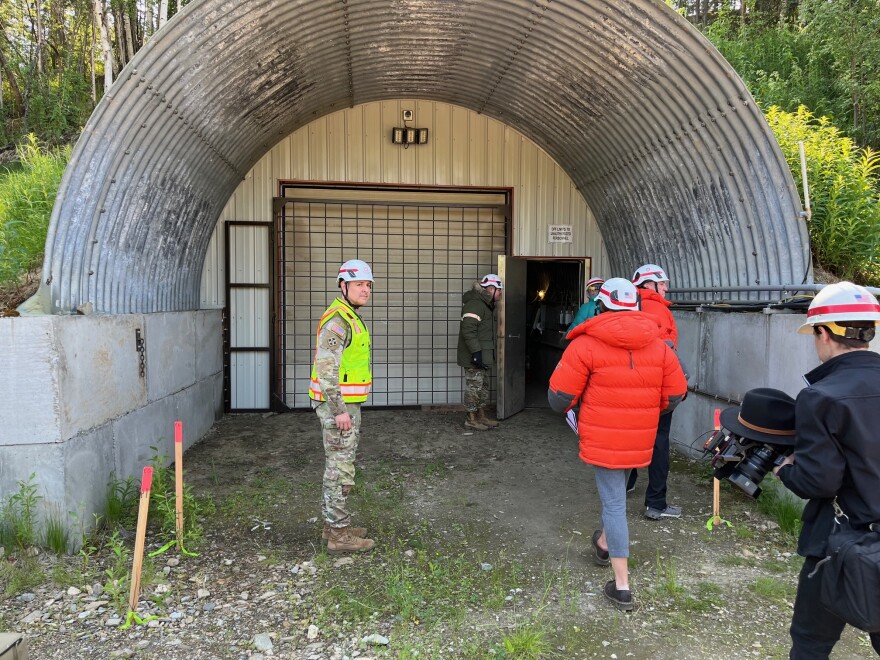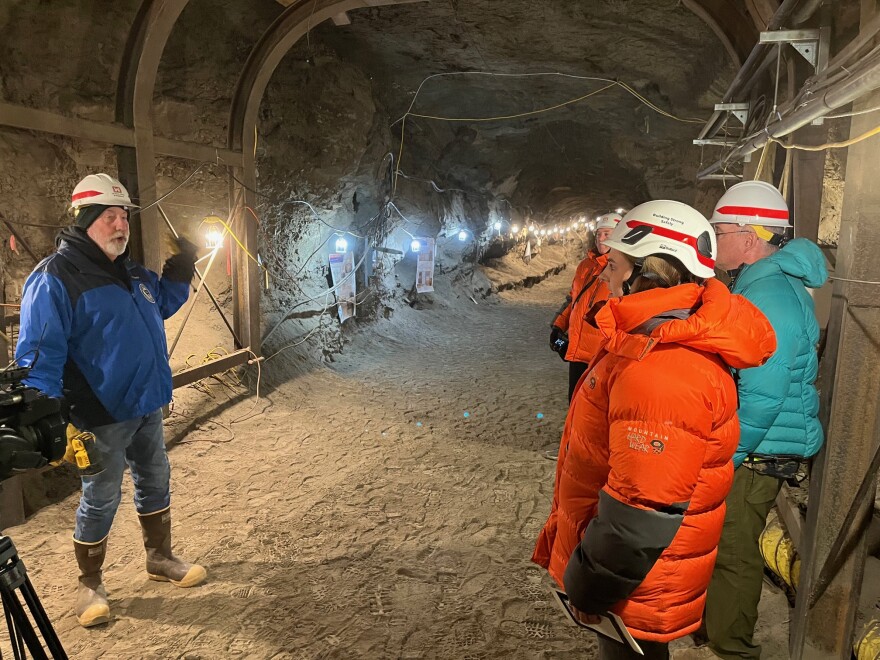‘World-class facility to support world-class research,’ Corps official says — including basics, like bathrooms
The Army Corps of Engineers has begun work on an $11 million operations center at its Permafrost Tunnel and Research Complex in Fox. The new facility will improve the Army’s ability to study the effects of climate warming on ground and infrastructure stability.
Local and high-ranking officials with the Corps of Engineers broke ground Tuesday on a 4,300-square-foot operations facility at its permafrost research tunnel north of Fairbanks.

“There’s only two of these facilities actually in the world,” said David Pittman, who directs the Corps’ Mississippi-based Army Engineer Research and Development Center. “One is in the United States, right here in Fox, Alaska. And one’s in Russia!”
Pittman told about two dozen people at the groundbreaking ceremony that the new Permafrost Tunnel facility will help researchers keep abreast of climate-driven changes in Arctic as the Army grows its presence in the region.
“So we’ve got to have research and development capabilities that kind of exceeds (those of) all our adversaries out there,” he said.
The new operations facility will significantly upgrade the existing 61-year-old research complex, he added, with the addition of a laboratory, administrative offices and conference rooms.
“We need a world-class facility to support the world-class research that we’re doing there,” Pittman said. “And understanding permafrost is important for the world, because we’ve got a lot of military facilities here. There’s national security questions involved.”
After the groundbreaking, Gary Larsen, a senior member of the permafrost tunnel staff, led some of the invited guests on a tour of the tunnel.

“Our number 1 reason for being is research,” he said early-on in the tour. “But, this is part of Fort Wainwright, so a secondary use of this tunnel is actually military …”
Larsen handles day-to-day operations at the complex for the Alaska Research Office of the Corps’ Cold Regions Research Engineering Laboratory. And he explained the scientific value of the tunnel, which provides a glimpse of what Alaska was like 45-thousand years ago.
“You can see a steppe bison horn with its sheath still on there,” he said, pointing out a pointy object emerging from the tunnel’s walls. “Here you see a woolly mammoth leg bone, and other pieces and parts over here…”
Studying the remains of ancient plants and animals embedded in the walls and ceilings, along with ice wedges and other formations, helps researchers understand how climate warming affects frozen ground. After the tour, Larsen said the new facility will improve that research by adding basic infrastructure to support tunnel operations, like a well and pumphouse and a heated garage.
“Garage space that’s warm, so we could actually maintain our research equipment,” he said, “and be able to use it throughout the winter, because our research isn’t just during the summer, it’s all year-round -- right?
There also will be real bathrooms, instead of porta-potties.

“Yes. The bathroom is essential,” Larsen said. “We’ve worked out here for so many years without running water or indoor plumbing. We’re thrilled!”
Pittman said improving research at the tunnel will benefit both the military and the general public. He said it could alleviate climate change-driven impacts like those that have created a sort of roller-coaster effect on a stretch of the Steese Highway just south of the tunnel.
“If you rode in on the road coming into this facility today, you saw the impacts on the roads themselves,” he said.
Pittman says thawing permafrost also threatens other area infrastructure -- like the Corps of Engineers-operated Moose Creek dam at the Chena Flood Control Project near North Pole.
“I just visited the dam yesterday, locally,” he said. “It’s built on permafrost. If it starts melting, guess what’s going to happen to the dam?”
The new Permafrost Tunnel Operations Facility will help answer that and many other questions. Construction on the project is scheduled to be completed by the end of next year.



